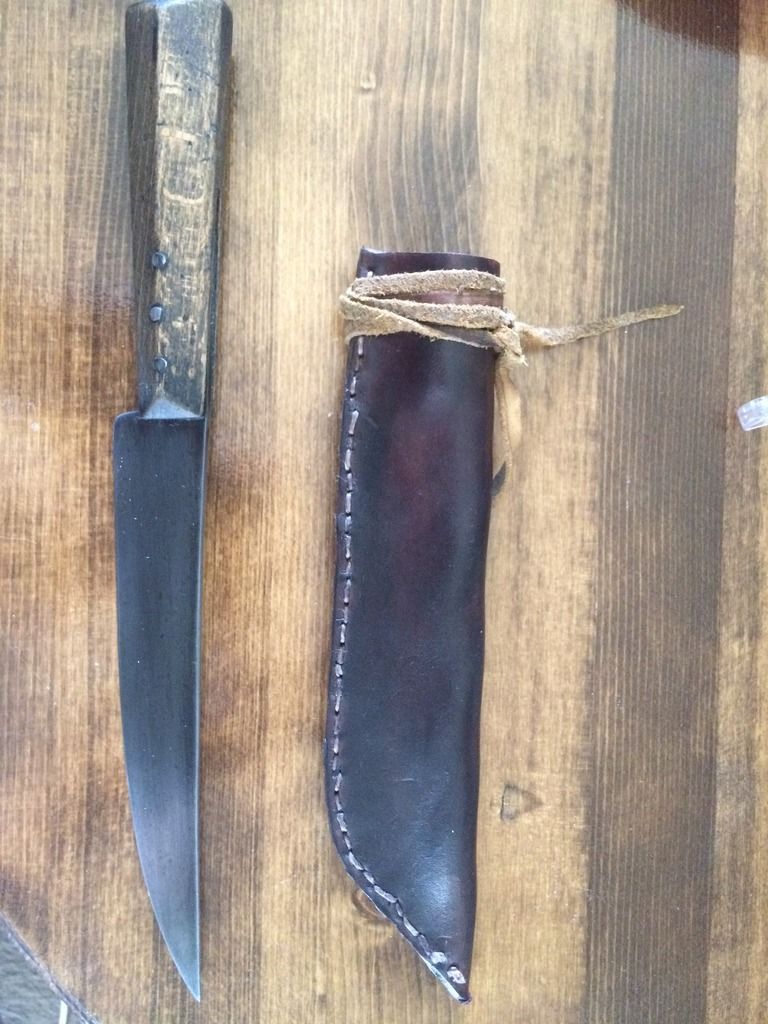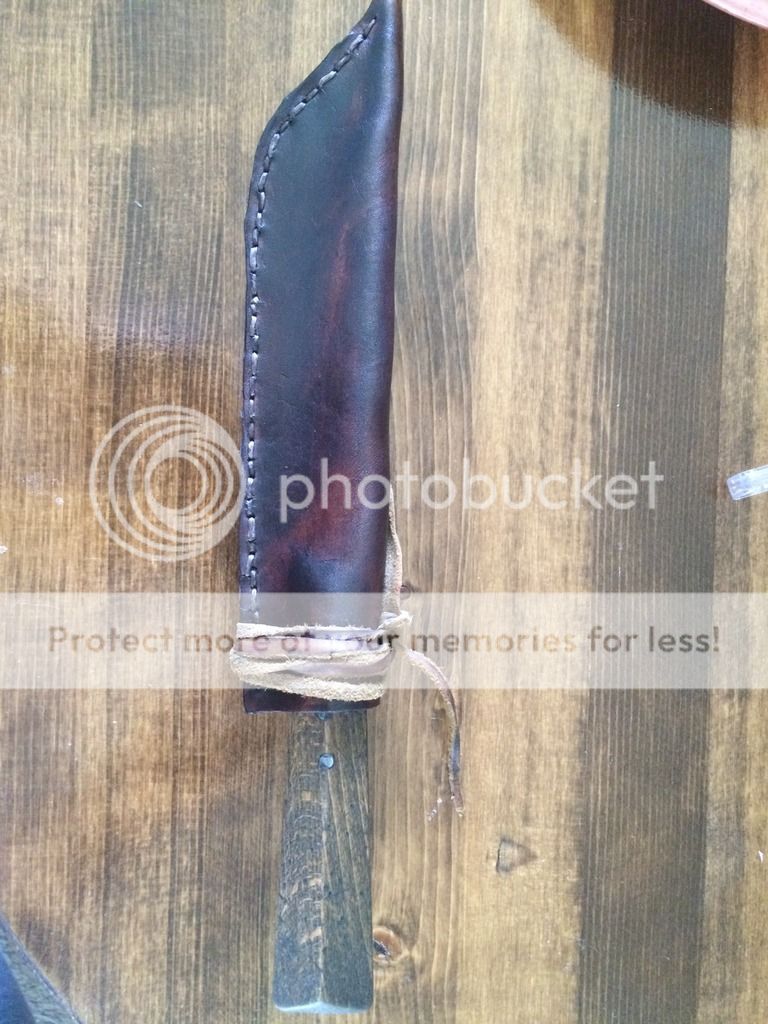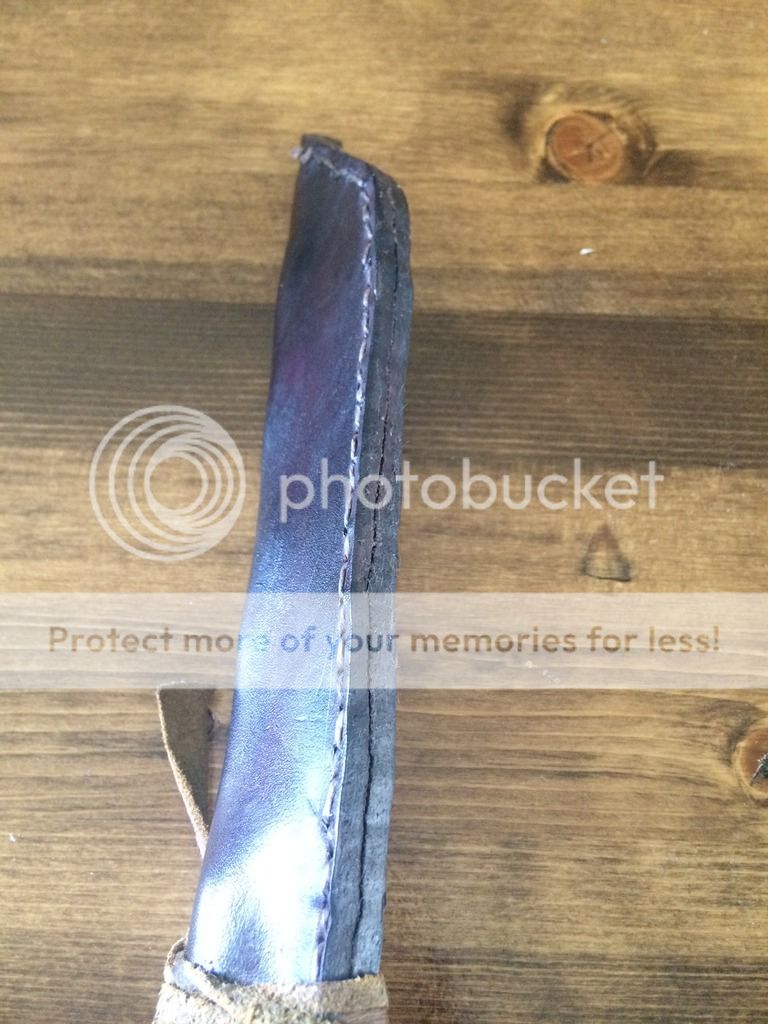This is my third knife sheath Ive ever constructed. I did my eat, as the Old Dominion Forge English Trade Knife deserves a nice sheath. Mr. Willard makes a fine blade!
SgtErv, however, makes an indiffernt sheath!
I used very thick veg tan leather (I think 7-9 oz), 5 ply waxed linen thread. I then trimmed the edges are burnished, but they separated a bit once it fully dried. It's dyed with Feiblings Walnut and sealed with Feibling's Leather Balm with Atom Wax.
The blade has some clearance so that it is not grazing the stitching, and the stitching is very tight. I cinched it down even tighter with a buckskin wang. Might be a fatal mistake though, eventually.
Lots and lots of room for improvement, but with every piece I learn some important things about technique. Biggest lesson for this one was that adequately punched holes are the key to even stitching.



SgtErv, however, makes an indiffernt sheath!
I used very thick veg tan leather (I think 7-9 oz), 5 ply waxed linen thread. I then trimmed the edges are burnished, but they separated a bit once it fully dried. It's dyed with Feiblings Walnut and sealed with Feibling's Leather Balm with Atom Wax.
The blade has some clearance so that it is not grazing the stitching, and the stitching is very tight. I cinched it down even tighter with a buckskin wang. Might be a fatal mistake though, eventually.
Lots and lots of room for improvement, but with every piece I learn some important things about technique. Biggest lesson for this one was that adequately punched holes are the key to even stitching.














